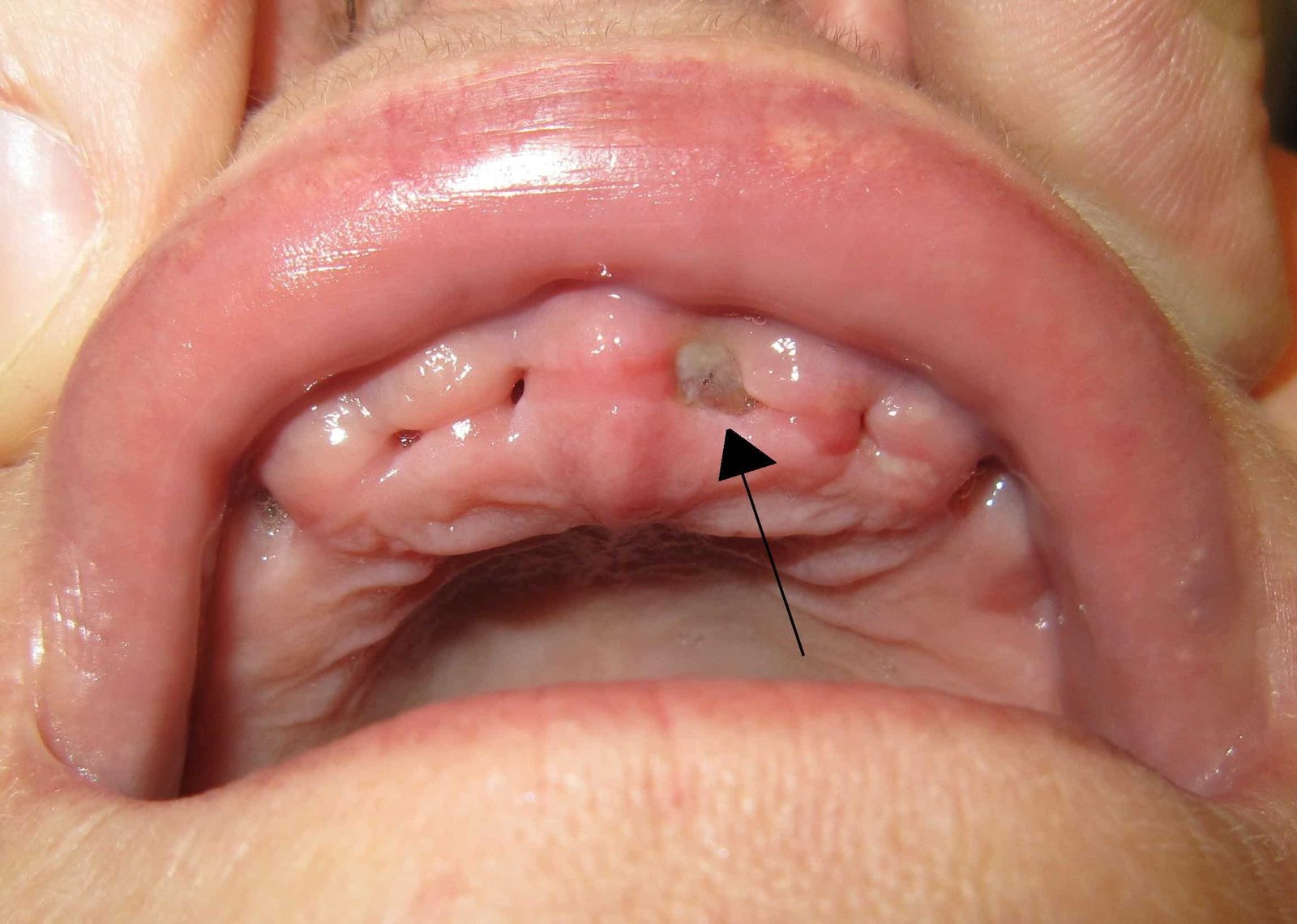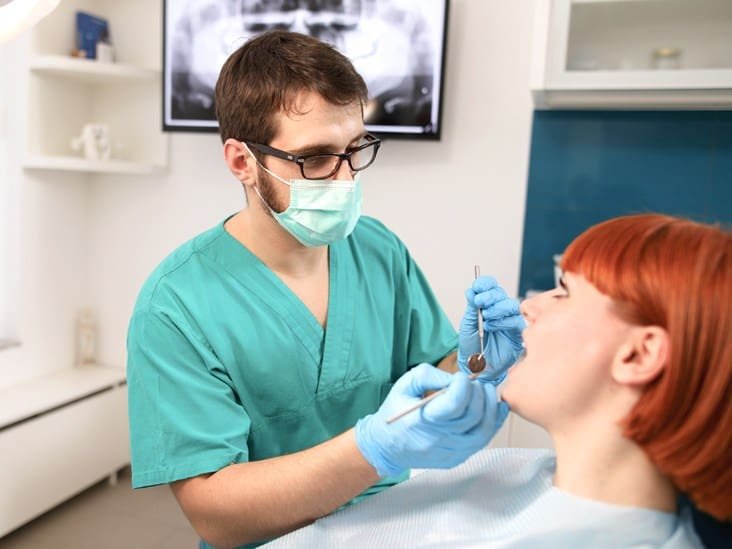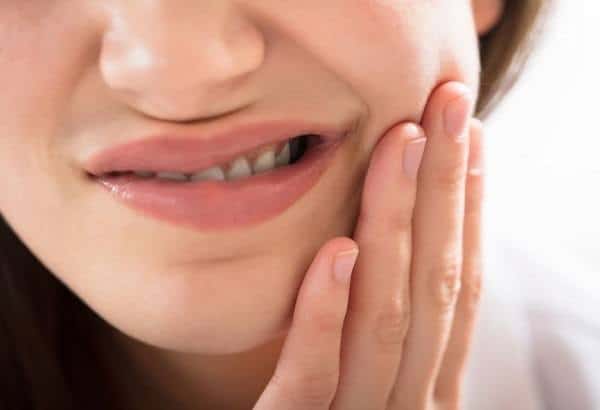Three days after getting her lower molar extracted, Sarah feels an awfully throbbing pain at the extraction site that makes her feel like it’s the end of her world.
Soon she feels a foul taste in her mouth and her breath constantly smells even after brushing and using a mouth wash.
The internet is telling her that she might have a dry socket, the most common complication of an extraction.
As soon as she visits her dentist, they examine the socket, ask her a few questions and tell her that it probably occurred due to her neglect towards the post-op instructions.
But thankfully she didn’t delay her visit and was provided with the right treatment.
If you are also wondering what treatment she was given and how does a dentist treat dry socket…
keep reading!
Okay first things first
No matter how much information you gather from this article, it’s in no way possible that you can do the same at home. Pay a visit to your dentist as soon as possible and let them handle it for you!
Coming back to how a dentist treats dry socket, it’s not a very long or painful process. The aim is to make sure the healing process starts again and the pain goes away.
So whenever a patient comes with complaint of dry socket, the dentist makes sure that they have cleaned the tooth socket out of all the debris and bacteria.
After that, they fill the socket with a medicated dressing which will promote healing and provide relief from the pain. Along with that, the patient is put on an antibiotic course and given NSAID’s which are the systemic analgesic of choice.
It is expected that the socket will now start healing within a week provided the patient is coming for follow up visits, taking their medicines on time and religiously doing saltwater rinses.
Since I know that your curious brain is bombarded with some more questions, let me answer them for you below.
What Is A Dry Socket?

Medically known as alveolar osteitis, dry socket is a painful complication of extraction. It occurs when the healing clot at the site of the extraction socket gets dislodged or fails to form.
Normally this clot forms a protective layer over the bone and the nerve endings lying inside the empty tooth socket. It also serves as a foundation for the new bone and the soft tissue to develop.
When the clot does not form either due to smoking, surgical trauma, local anaesthesia, bone disease or immunodeficiency; or gets dislodged because of rinsing the mouth for the first 24 hours, the socket stays empty with no source of protection.
The alveolar bone and the nerves in it are exposed in the open causing excruciating pain in the socket area which frequently radiates to the patient’s ear.
Along with that, the patient also complains of foul taste and breath that constantly smells like rotten eggs!
Alveolar osteitis majorly presents after the extraction of lower molars, especially impacted wisdom teeth.
The cause is unknown as it could be due to some subclinical infections, inflammation of the bone, the surgical technique or other factors like neglect in following post op instructions, smoking or some drugs.
How Long Does Dry Socket Last?
Dry socket is simply delayed healing of an extraction socket, exposing the bone and the nerves. When the socket is out in the open it is an open door for the bacteria to start mission infection and attack!
If left untreated, it can last for several weeks and may lead to further complications and infections.
But as soon as you visit your dentist, the symptoms will subside within a few hours and the pain should reduce greatly.
The socket is supposed to heal within a week provided the person is not smoking or is not suffering from any immunodeficiency disorder or a bone disorder or taking oral contraceptives in cases of women.
In all such cases the dry socket may take longer to heal or it may even be difficult for it to heal completely.
Therefore, if you are a smoker who is getting treatment for alveolar osteitis make sure that you absolutely quit this harmful habit for at least the next 24-48 hours.
If you’re suffering from any major disorders that may make this complication hard to subside, immediately consult your doctor and don’t forget to tell your dentist about the systemic diseases that you’re suffering from.
The Method Dentists Use To Treat Dry Socket

After examining and diagnosing a dry socket your dentist will start treating it to provide you relief from the pain as soon as possible.
Firstly, to be able to carry out the treatment in peace and not let their patient suffer, the dentist will give local anaesthesia around the tooth socket.
Next, with a surgical instrument called curette they will remove all the debris and the bacteria. Bleeding is also induced so that the healing clot can form.
The next step is to copiously irrigate the dental socket and make sure all the junk is out of the socket. Once that is done a dressing of alveogyl, BIPP (Bismuth Iodine Paraffin Paste) or ZOE (Zinc Oxide Eugenol) is applied on the exposed bone.
These dressings are remarkable in reducing the pain and provide instant relief.
Conversely the patient is asked to use chlorhexidine mouth wash or do warm saline rinses 24 hours after the treatment. Only if I could stress upon the warm saline rinses more.
They are the key to keeping your socket away from the infection. Whether it’s a dry socket or exposed sockets after an extraction, warm saline rinses are a must and should be done religiously.
Another important thing is taking your antibiotics post extraction.
Please don’t skip a dose!
Similarly, whatever instructions are given to you by your doctor post dry socket treatment, whether it’s to not use a straw or stop smoking, you have to follow it!
What Happens If You Don’t Get Dry Socket Treated?
Since dry socket is associated with delayed healing of the dental socket and is not an infection in of it-self, if left untreated, could lead to an infection.
And in this case, it’d not just be the radiating pain that will be a problem. The classic signs of an infection i.e. fever, swelling and redness will be present. Along with that, puss discharge from the tooth socket also ensues.
Once this situation occurs, that side of the jaw is terribly painful. You are put on an extensive course of antibiotics and pain killers. But thankfully antibiotics can cure these infections along with the conservative treatment of a dry socket.
Therefore if you don’t want to go through all this mess for a tooth, consult the professional right away!
Can A Dry Socket Heal On Its Own?
Even though an untreated dry socket can easily lead to an infection, at times where the clot is only dislodged, it will form again within the same amount of time as would if it were being treated.
So if you can take the terrible pain of a dry socket and are choosing to stay back and wait to let it heal on its own, good luck!
Can Dry Socket Kill You?

There are many dental complications and infections that can be life threatening!
Dry socket do not even come close. It’s just some exposed bone and nerves crying for the attention of a blood clot; (their knight in shining armor).
Even if it leads to an infection, antibiotics can do a pretty good job in getting rid of it. So don’t worry.
It will most definitely not kill you!
Summary
Dry socket is the most common complication of an extraction, especially that of lower impacted third molars.
It occurs when the healing blood clot fails to form and the bone and nerves inside the socket are exposed, causing a throbbing pain which usually makes everyday life brutal.
Patients suffering from dry socket also complain of foul taste and bad breath.
There are many reasons why this condition may happen which include:
- Smoking
- using a straw
- vigorous rinsing
- an immunodeficiency
- bone disorder
If it is caused due to certain habits, drugs or techniques, it can be well taken care of by following the conservative method of treating a dry socket. However, when the cause is a disorder it may need extensive treatment.
The treatment of a dry socket is pretty simple. Once you visit your dentist with the complaint, they will clean it all up and apply a healing gel, most popular one being the alveogyl to the socket.
After that they put their patients on NSAID which is a top notch analgesic for all tooth aches and ask them to do warm saline rinses.
A week goes by, and voila! The socket is healed.
Ideally a dry socket should only last for a week or so provided the treatment is given as soon as the symptoms arrive.
If that’s not done and it’s left to heal on its own there are two possibilities.
Either the clot will form again soon and the socket will start healing again; or…
It will lead to an infection. Because the pain of a dry socket is unbearable and you are wise enough to not put yourself at risk of an infection, I am sure you’ll not choose to wait it out!
Even though a dry socket can never kill you, it will most definitely kill the quality of your life.
And this is enough reason for you to follow everything that your dentist is asking you to do after the extraction.
References
Oxford Handbook of Clinical Dentistry
Contemporary Oral and Maxillofacial Surgery
Related Post:
